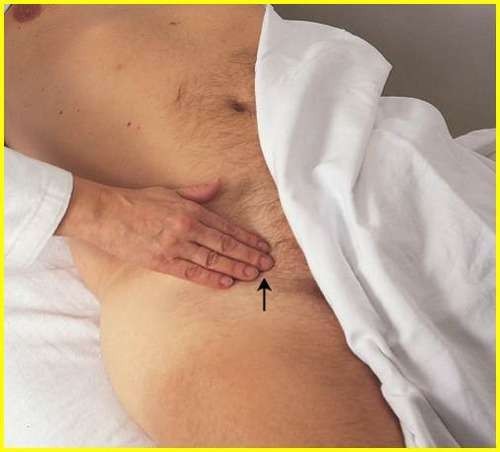A charge nurse is teaching new staff members about factors that increase a client’s risk to become violent.
Which of the following risk factors should the nurse include as the best predictor of future violence?
A history of being in prison.
Previous violent behavior.
Experiencing delusions.
Male gender.
The Correct Answer is B
Previous violent behavior. According to the web search results, this is the best predictor of future violence among the given risk factors.
Other risk factors include past history of aggression, poor impulse control, and violence. Comorbidity that leads to acts of violence (psychotic delusions, command hallucinations, violent angry reactions with cognitive disorders).
Choice A is wrong because a history of being in prison is not a direct cause of violence, but rather a possible consequence of it.
Choice C is wrong because male gender is not a sufficient factor to predict violence, as there are many other variables involved.
Choice D is wrong because experiencing delusions is not necessarily associated with violence unless they are of a paranoid or persecutory nature.
Normal ranges for violence risk assessment are not standardized, but some tools that can be used include the Historical Clinical Risk Management-20 (HCR-20), the Violence Risk Appraisal Guide (VRAG), and the Psychopathy Checklist-Revised (PCL-R). These tools use different scales and criteria to evaluate the likelihood of violent behavior in individuals.
Nursing Test Bank
Naxlex Comprehensive Predictor Exams
Related Questions
Correct Answer is C
Explanation

This is because coarctation of the aorta is a congenital condition where the aorta is narrow, usually in the area where the ductus arteriosus inserts. This causes a decrease in blood flow to the lower body, resulting in weak or absent pulses in the femoral arteries.
The other choices are incorrect for the following reasons:
Choice A is not a typical sign of coarctation of the aorta.
Nosebleeds can be caused by many factors, such as dry air, allergies, trauma, or bleeding disorders.
Choice B is also not a common finding in coarctation of the aorta. In fact, patients with this condition may have high blood pressure in the upper extremities due to the increased resistance of the narrowed aorta.
Choice D is not directly related to coarctation of the aorta.
Increased intracranial pressure can be caused by various conditions that affect the brain, such as head injury, stroke, infection, or tumor.
Normal ranges for blood pressure and pulse vary depending on age, sex, and health status. However, some general guidelines are:
- Blood pressure: less than 120/80 mmHg for adults; less than 95/65 mmHg for infants.
- Pulse: 60 to 100 beats per minute for adults; 100 to 160 beats per minute for infants.
Correct Answer is ["A","B","C","D","H"]
Explanation
- A. Heart rate: The client’s heart rate is elevated at 118/min, which could indicate blood loss, dehydration, pain, anxiety, or infection. This finding requires immediate follow-up to assess the cause and intervene as needed.
- B. Current medications: The client is taking ibuprofen 800 mg three times daily PRN for arthritis pain. Ibuprofen is a nonsteroidal anti-inflammatory drug (NSAID) that can cause gastric irritation, ulceration, and bleeding. This finding requires immediate follow-up to evaluate the client’s pain level, medication use, and possible alternatives to NSAIDs.
- C. Blood pressure: The client’s blood pressure is low at 90/50 mm Hg, which could indicate hypovolemia, shock, or cardiac dysfunction. This finding requires immediate follow-up to monitor the client’s fluid status, perfusion, and organ function.
- D. Stool results: The client’s stool tested positive for occult blood and H. pylori bacteria. Occult blood indicates gastrointestinal bleeding, which could be related to the client’s abdominal pain and weight loss. H. pylori is a common cause of peptic ulcer disease, which can also cause bleeding and pain. This finding requires immediate follow-up to confirm the diagnosis and initiate treatment with antibiotics and acid-suppressing drugs.
- H. Hemoglobin and hematocrit: The client’s hemoglobin and hematocrit are low at 9.1 g/dL and 27%, respectively. These values indicate anemia, which could be caused by chronic blood loss, nutritional deficiency, or bone marrow suppression. This finding requires immediate follow-up to determine the etiology and severity of the anemia and provide appropriate therapy such as blood transfusion, iron supplementation, or erythropoietin.
The other findings are not as urgent as the ones above:
- E. Respiratory rate: The client’s respiratory rate is normal at 18/min. There is no evidence of respiratory distress or hypoxia.
- F. WBC count: The client’s WBC count is normal at 6,700/mm3. There is no indication of infection or inflammation.
- G. Temperature: The client’s temperature is slightly elevated at 37.5° C (99.5° F), but not enough to warrant immediate concern. It could be due to stress, dehydration, or a mild infection. The nurse should monitor the temperature trend and report any significant changes or signs of sepsis.
Whether you are a student looking to ace your exams or a practicing nurse seeking to enhance your expertise , our nursing education contents will empower you with the confidence and competence to make a difference in the lives of patients and become a respected leader in the healthcare field.
Visit Naxlex, invest in your future and unlock endless possibilities with our unparalleled nursing education contents today
Report Wrong Answer on the Current Question
Do you disagree with the answer? If yes, what is your expected answer? Explain.
Kindly be descriptive with the issue you are facing.
